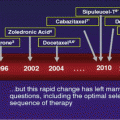Fig. 1
By incising Glisson’s capsule at the base of segment IV, the origin of the main hepatic duct, the bifurcation, and the left main hepatic duct are exposed. By retracting segment IV cephalad and incising the overlying tissue, the proximal extrahepatic biliary system and more specifically the extrahepatic portion of the left main hepatic duct are exposed. A side-to-side biliary enteric anastomosis can be performed at this time for biliary drainage in the setting of unresectable pCCA (Drawing by D. Factor, Mayo Clinic, Rochester, Minnesota, copyright 1995). Used with permission
For patients with advanced disease, systemic therapy should be considered either as definitive therapy (i.e., for patients with unresectable disease) or as adjuvant therapy (i.e., for patients with resected disease and adverse pathological features such as lymph node metastasis). Unfortunately, chemotherapy has minimally proven benefit in CCA and likely would not be administered in a remote tropical area [1]. In addition, radiation or other intra-arterial therapies are not curative in nature, and these therapies are unlikely to be feasible in a remote tropical setting [2].
While cholangiocarcinoma can be managed with scant resources, transferring a patient with a possible diagnosis of CCA to an area with more available resources may be appropriate. In addition, transferring the patient for appropriate surgical resection is also appropriate if the surgeon in the remote setting is not comfortable with the complexity of surgical resection associated with CCA. CCA traditionally requires extensive workup and complex surgical management. As such, both the diagnosis and surgical management of CCA in a tropical setting with limited resources can be quite challenging.
References
1.
Blechacz B, Gores GJ (2008) Cholangiocarcinoma: advances in pathogenesis, diagnosis, and treatment. Hepatology 48(1):308–321PubMedCentralCrossRefPubMed
2.
3.
Bragazzi MC, Cardinale V, Carpino G et al (2012) Cholangiocarcinoma: epidemiology and risk factors. Transl Gastrointest Cancer 1(1):21–32
4.
Fan B, Malato Y, Calvisi DF et al (2012) Cholangiocarcinomas can originate from hepatocytes in mice. J Clin Invest 122(8):2911–2915PubMedCentralCrossRefPubMed
5.
Sell S, Dunsford HA (1989) Evidence for the stem cell origin of hepatocellular carcinoma and cholangiocarcinoma. Am J Pathol 134(6):1347–1363PubMedCentralPubMed
6.
Palmer WC, Patel T (2012) Are common factors involved in the pathogenesis of primary liver cancers? A meta-analysis of risk factors for intrahepatic cholangiocarcinoma. J Hepatol 57(1):69–76PubMedCentralCrossRefPubMed
Stay updated, free articles. Join our Telegram channel

Full access? Get Clinical Tree




